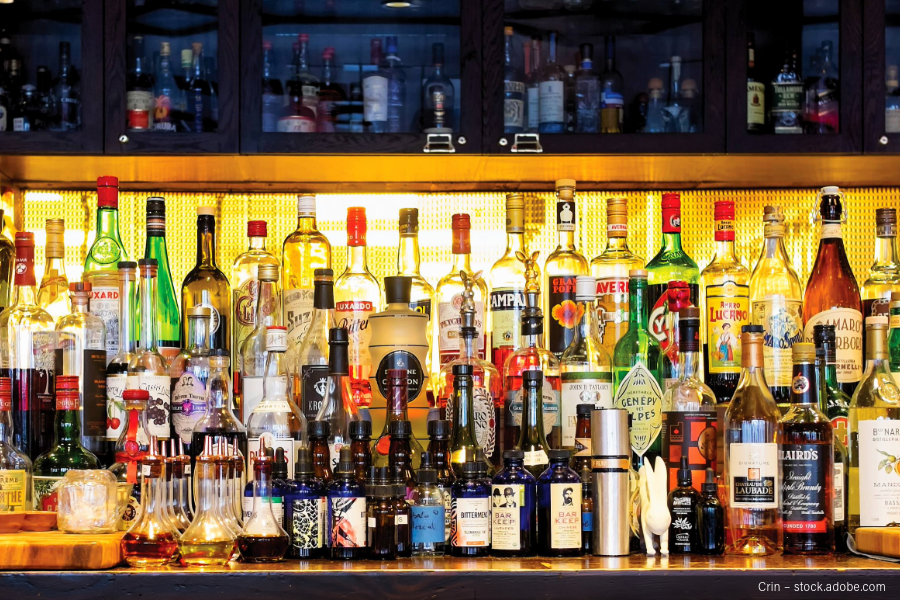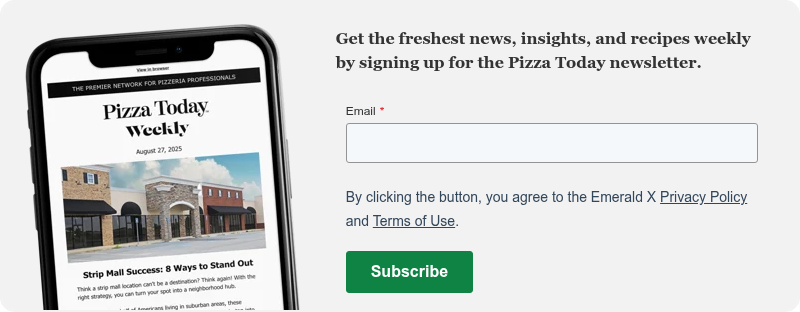Beverage Storage & Handling Tips for Pizzeria Safety
Every pizzeria operator knows you can’t build a business on pizza alone. Customers love washing their slices down with liquid refreshment ranging from water to sodas, beer to wine and kombucha to cocktails.
Beverages may seem benign, but they must be handled with food safety considerations at the top of mind. Here’s how to make sure your beverage program follows regulations and best practices so you handle, store and serve your beverages safely.
Know the Rules
Your state health department is your best resource for beverage-related rules and regulations. Many states have additional agencies governing alcohol service. Consult with these authorities; your practices and your employee training must reflect current requirements. Violating these rules can result in penalties such as costly fines.
One Option: Keep It Simple
How ambitious is your beverage program? You can streamline your business by limiting beverage selection to single-serving cans or bottles. This simplifies compliance with health and safety requirements, and it doesn’t limit options for your customers.
The sky’s the limit for craft canned and bottled drinks. You can stock exotic sodas, sparkling water, kombucha, iced tea, iced coffee and much more in single-serving units. In the alcoholic drink category, there’s an excellent variety of craft beer, craft cider, wine, hard seltzers and even cocktails by the can or bottle. There’s also an ever-growing segment of NA (nonalcoholic) beer, wine and cocktails or mocktails.
Most single-serving beverages are shelf stable, so choosing this strategy doesn’t consume precious walk-in space. You also save on labor and attention required to clean and maintain dispensers and lines for soda or beer. Lastly, this strategy ensures consistent quality with minimal effort.
Tips for Proper Beverage Storage in Your Pizzeria
A safe and successful beverage program starts with storage. Beverages must be stored in appropriate conditions to preserve flavor, freshness and integrity. Store all beverages and beverage components according to legal requirements and vendor or product recommendations.
Dairy products and many juices must be refrigerated at 33-40 F to prevent spoilage.
Store shelf-stable drinks in cool conditions, away from direct sunlight. Keep storage areas organized, clean and dry to prevent contamination and maintain product quality.
Brian Bovenizer, director of marketing at Fort George Brewery and Public House in Astoria, Oregon, warns it violates health code to stack food products on top of beverage cases in areas with mixed storage. Wood-fired pizza is a main attraction at Fort George, which has ladders in the walk-ins and always stores beverages on the top shelves.
“It’s extremely tempting to stack on cases of drinks, because they’re so nice and flat,” Bovenizer says. “If anything drips down, you’re looking at contamination. You shouldn’t even rest anything there for a second – especially meat.”
Like with any inventory, maintain a first-in, first-out (FIFO) system to ensure older products are used before newer ones. This ensures quality, reduces waste and diminishes the chance of serving expired beverages. Bovenizer notes that kegs of beer and cans of hoppy beers such as IPAs should be served within 90 days of the packaging date printed on the bottom of the can or keg collar. “Lagers and stouts are typically 180 days,” he says.
Properly secured storage is particularly important to prevent theft of alcoholic beverages and ensure compliance with alcohol regulations. Spirits, wines and beers should be inventoried regularly to monitor usage and avoid losses. Temperature-controlled storage helps preserve quality for craft beers, specialty wines and certain syrups.
Key Food Safety Regulations for Beverage Handling
Sanitation, quality, compliance and your bottom line should govern your beverage-handling strategy. Set up your beverage station and dispensers so they are easy to clean and monitor. Glassware, dispensers, beer taps, coffee machines and soda guns must be cleaned regularly to avoid contamination and maintain flavor consistency. Establish a cleaning and maintenance routine and stick to it. Document your efforts as required by local regulations – and to keep employees accountable.
Bovenizer says the No. 1 consideration for anyone serving beer on tap is routine tap cleaning, at least every two weeks. “If your taps aren’t clean, your beer becomes undrinkable quickly,” he says. In some states the distributor is responsible, and in some states it’s the restaurant. At Fort George, several employees are trained to clean taps, but one employee always does it, “so we know they’re doing it, and they can have their own system.” He advises any establishment that struggles to keep up on tap cleaning to “pay a service to take care of it – it’s not that expensive.”
Clean glassware is especially critical in beer service, says Bovenizer. “If you see any bubbles on the glassware, it’s not clean, and that will affect the taste and quality of beer served in it.” He recommends a quick rinse before service to ensure that the glass is free of residue, dust, etc.
Follow all regulations by your local jurisdiction regarding accurate documentation, such as liquor licenses and supplier invoices, to ensure compliance with local health and alcohol laws.
Beverage Service
Set up the serving station so it’s easy to clean and stock. Keep it well-organized to promote efficiency and sanitation. Speedy service is important – it keeps customers happy and encourages re-ordering.
Proper pouring techniques minimize waste and keep portions accurate. This is especially critical for alcoholic beverages and the legal regulations governing them.
You want to present drinks at the right temperature, served in appropriate glassware and in a timely manner. Different beverages require specific serving methods. Pour soft drinks with the right amount of ice to prevent dilution. Pour beer at the correct angle to maintain its carbonation and foam. Serve wines at their ideal temperatures. Measure, mix and serve cocktails with care, garnished for an appealing presentation.
Training
Make sure your training activities and manuals reflect your emphasis on beverage safety, sanitation, quality and portion control. This is especially critical around issues of safety and sanitation as well as alcohol-service regulations. Violations can result in fines and seriously jeopardize your business. Many states require that all servers who handle liquor be certified. This verifies they know about responsible serving practices, including recognizing signs of intoxication and cutting off service when necessary. Make it clear to your employees that you take these matters seriously.
Train employees to operate dishwashing setups correctly, whether it’s a triple-sink or a dishwasher. At Fort George, they have multiple different setups that don’t operate the same or rely on the same chemicals, so Bovenizer emphasizes that training employees specifically on each setup is critical for food safety, beverage quality and customer experience.
While pizza may be your passion, your beverage program should be a valued part of your guests’ experience and your bottom line.
ANNELISE KELLY is a Portland, Oregon-based freelance writer.



